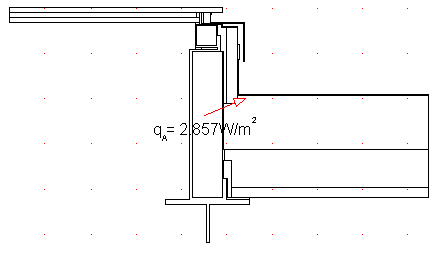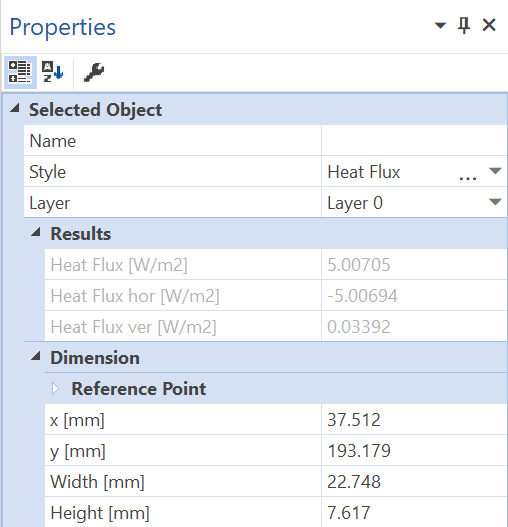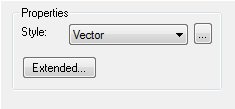Description
The Heat Flux tool allows you to display the value and the direction of the heat flux at any given point on a result object.
How do I activate it?
The Heat Flux tool can be activated with the command Heat Flux in the menu Results or by clicking on the ![]() icon in the Toolbox flyout.
icon in the Toolbox flyout.
How do I use it?
The use of the Heat Flux tool is comparable with that of the Temperature tool. As soon as you move the mouse over the result object the heat flux of a given spot is displayed. To lock this value, click on the desired spot with the mouse button. This will create a label and an arrow indicating the direction of the heat flux (see figure 1).
With the Select, Move, Scale tool or Edit tool respectively, you can change the position of the label as well as the position of the start and endpoints.
The type of label (e.g. the number of post decimal placeholders) as well as the visual characteristics of the arrow can be changed by using the corresponding Style in the Styles flyout.

The horizontal and vertical rate of the local heat flux are additionally displayed in Properties flyout (cf. figure 2).

Figure 2: Properties Flyout of heat flux object
Defining Styles
The presentation of a heat flux object can be defined in the Style list in the Heat Flux tool properties (see figure 3). The list shows all styles for heat flux objects that have previously been determined in the Styles flyout.
A new heat flux object will always be created with the styles currently marked in the Style drop down list. You can either change the selection of the styles in the Styles flyout or in the Style drop down list in the Heat Flux tool properties .
The styles can be also be adjusted afterwards by using the Assign Properties tool or by using the Drag&Drop function (see lesson 1).

Figure 2: Heat Flux tool properties
 Limitations
Limitations
•This tool can only be used on the report page and only if result objects of a previously calculated model are present.